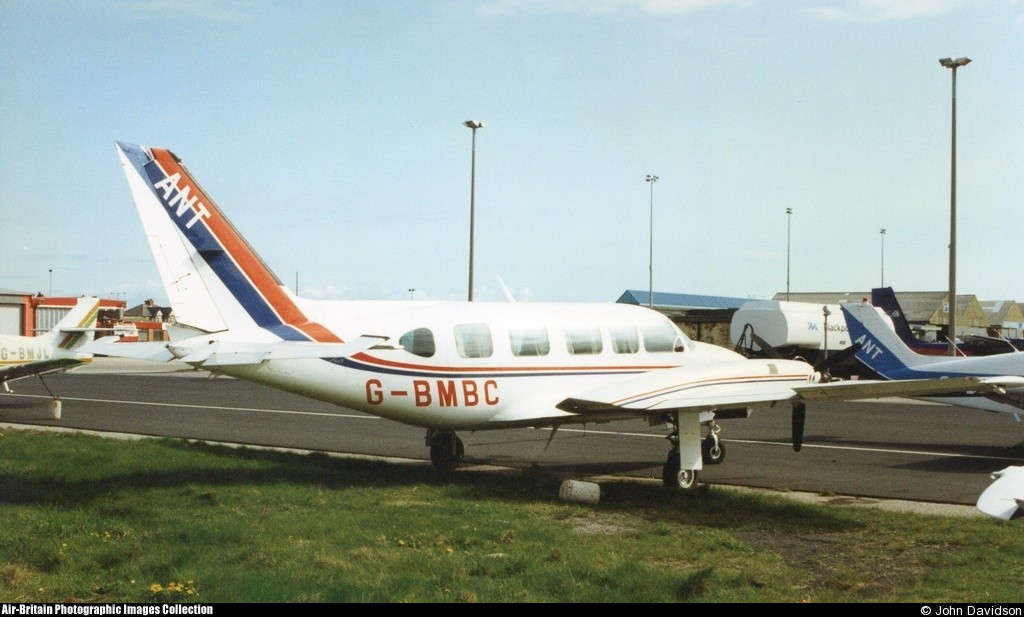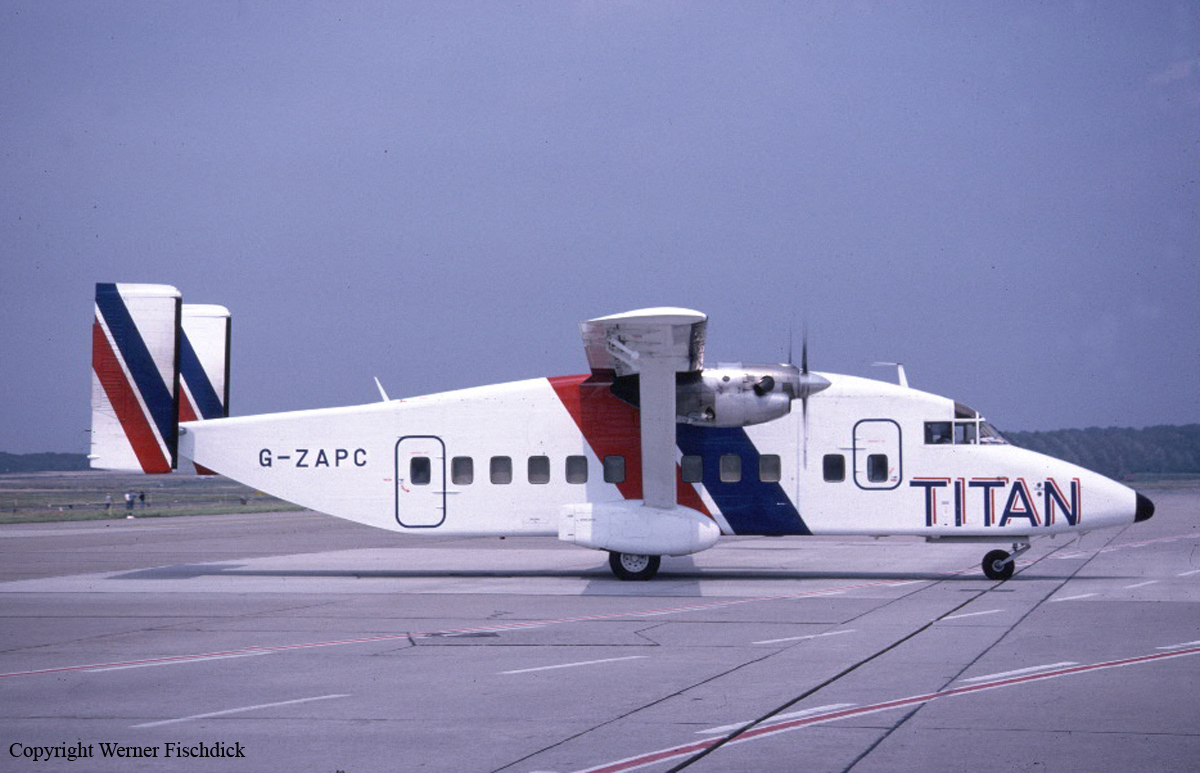Country
code
Merseyside
Crash of a Piper PA-31-350 Navajo Chieftain off Liverpool: 5 killed
Date & Time:
Jun 14, 2000 at 0950 LT
Registration:
G-BMBC
Survivors:
No
Schedule:
Douglas - Liverpool
MSN:
31-7952172
YOM:
1979
Crew on board:
1
Crew fatalities:
Pax on board:
4
Pax fatalities:
Other fatalities:
Total fatalities:
5
Circumstances:
The aircraft, operated by an Air Operator's Certificate holder, was engaged on an air ambulance operation from Ronaldsway in the Isle of Man to Liverpool. Having flown under VFR on a direct track to the Seaforth dock area of Liverpool the pilot flew by visual reference along the northern coast of the Mersey Estuary to carry out a visual approach to Runway 09 at Liverpool. During the turn on to the final approach, when approximately 0.8 nm from the threshold and 0.38 nm south of the extended centreline, the aircraft flew into the sea and disappeared. All five occupants were killed.
Probable cause:
The investigation concluded that the pilot lost control of the aircraft at a late stage of the approach due either to disorientation, distraction, incapacitation, or a combination of these conditions.
Final Report:

Crash of a Short 330-300 in Liverpool
Date & Time:
Jan 3, 1997 at 0042 LT
Registration:
G-ZAPC
Survivors:
Yes
Schedule:
Exeter - East Midlands
MSN:
3023
YOM:
1978
Crew on board:
2
Crew fatalities:
Pax on board:
1
Pax fatalities:
Other fatalities:
Total fatalities:
0
Captain / Total hours on type:
900.00
Circumstances:
The aircraft departed Exeter at 2237 hrs where the weather was fair with scattered cloud at 1500 feet. After climbing uneventfully through cloud to FL 90 the aircraft cruisedin clear, smooth air. In the cruise the co-pilot noticed that his vertical speed indicator was displaying a slight rate of climb although the aircraft was in level flight but this and a spurious hydraulic warning were the only anomalies. As the aircraft approached East Midlands airport the runway visual range there was below the approach minima and several aircraft were holding awaiting an improvement in the visibility. G-ZAPC descended to 2,500 ft and held in clear air over the Lichfield NDB for about 45 minutes until the fuel state dictated a diversion to Liverpool. On diversion the aircraft was initially cleared direct to the Whitegate NDB and then Wallasey VOR at FL 40. At this level the crew could see ground features in good visibility until they entered cloudas they descended through 3,500 feet whilst being radar vectored for an approach to Liverpool Airport. The cloud was stratiform in character and did not appear to contain precipitation or significant turbulence. At Liverpool airport the cloud base was 6/8at 1,100 feet, the visibility 12 km, the air temperature +1°Cand the surface wind was 060°/8 kt. There is an ILS localiser on Runway 09 but no glidepath transmitter so a LOC DME approach is normally flown. Although the DME antenna is mid-way along the runway, the DMErange is set to read zero at the runway displaced threshold. The pilot flies the localiser in azimuth and adjusts his height according to his pressure altimeter; the 3° glidepath commences at 1,610 feet QNH from 5 nm DME with check heights at 4, 3, 2 and 1 nm DME. On the north side of the runway 329 metres from the threshold there are 4 PAPI (Precision Approach Path Indicator)lights which are set to a glidepath of 3°. During the approach to Runway 09 at Liverpool all the anti-icing services were switched on and operating except for the wing de-icing boots which, having seen no ice on the wings,the commander decided not to employ, and the ice detector which he considered unreliable. The approach proceeded normally andthe aircraft descended out of cloud at about 1,100 feet having been in cloud for about 10 minutes. When the commander viewed the PAPIs at 1 DME"all four lights had a pink tinge". Thinking he might be slightly low relative to the approach glidepath, he asked the co-pilot to specify the correct height at 1 DME which was 410feet. At the time the commander's pressure altimeter, which was set to the QNH of 1019 mb, indicated that the aircraft was slightly high and so he made a small correction to the flight path which resulted in three red PAPI lights and one white light. The commander also decided to touch down slightly beyond the runway identifier numbers which are a few metres beyond the 'piano keys' that identify the threshold. The aircraft was cleared to land with a wind of "Easterly at 10 kt" and on short finals the commander asked for full flap. He then allowed the speed to bleed back from the approach speed of between 110 and 120 KIAS towards the threshold speed of 90 KIAS without moving the throttles from their approach power setting. According to both crew members and the passenger who was seated in the 'jump seat', the aircraft crossed over the end of runway at between 88 and 90 KIAS. Some 20 to 30 feet above the runway the commander noticed that the flight controls felt 'sloppy' as if the aircraft's speed was unusually low but there was no hint of a stall warning or stick shaker activation. At much the same time all three persons on board felt the aircraft sink rapidly; the commander pulled back on the control column but he was unable to arrest the high rate of descent and the aircraft struck the runway very hard. The right wing dropped as the right main gear collapsed and the aircraft veered to the right off the runway onto the grass. The ground was frozen hard and the aircraft came to a halt without incurring further significant damage. The crew informed ATC that they were unhurt before securing the aircraft whilst ATC activated the airport's emergency services. On leaving the aircraft the commander inspected the wings for ice accretion. He noticed a thin layer of clear,watery ice along the leading edges across the pneumatic de-icing boots from top to bottom. The ice layer could be wiped off with one finger and was no more than one eight of an inch thick. Throughout the flight there had been no visible signs of ice accretion on the wings or the windscreen wiper. Consequently, the commander had not increased the threshold speed to compensate for ice accretion.
Probable cause:
From the available evidence it appears probable that the aircraft developed a high rate of descent from a height of 20 to 30 feet above the runway without producing a stall warning. The following causal factors were considered: wind shear; wake turbulence; pitot-static system errors; low airspeed during the final stages of the approach; and significant ice accretion on the airframe. Wind shear was discounted because numerous wind readings showed the normal slight variation in direction but a consistent wind speed, and there were no obstacles such as hangars upwind of the threshold. Wake turbulence was discounted because the preceding aircraft had landed 19 minutes before GZAPC. The pitot-static systems were checked to be leak free and all relevant instruments were shown to be accurate. It was also established that all pitot head, static plate and stall warning heaters were serviceable. A favourable comparison of the approach profile with those of the preceding four aircraft indicated that there was no evidence of static pressure errors. The calculated airspeeds from radar were consistent with thespeeds reported by the crew for the initial approach suggesting that itot errors were not significant. Thus, unless icing, for example, had affected these systems at a late stage of the approach,erroneous instrument readings were considered unlikely. The final approach was flown at about the correct airspeed but there was a trend within the radar data,for the last mile of the approach, for the airspeed to reduce towards the stalling speed. However the data was too coarse to provide exact speeds and the stall warning system did not activate. The likelihood of significant airframe icing was discounted for several reasons including: the commander's statement; photographs taken of the aircraft shortly after the accident which showed no signs of significant ice accretion; no lumps of ice were found on the runway; and the airframe was icefree when examined by the AAIB despite overnight sub-zero temperatures. There was, therefore, no positive conclusion as to the cause and it remains a possibility that some or all of the above factors, to a small extent, may have combined to produce a high rate of descent while the aircraft was some 20to 30 feet above the runway.
Final Report:

Crash of a Britten-Norman BN-2B-27 Islander in Ainsdale
Date & Time:
Aug 21, 1987 at 0530 LT
Registration:
G-BLDX
Survivors:
Yes
Schedule:
Manchester – Douglas
MSN:
2181
YOM:
1983
Crew on board:
1
Crew fatalities:
Pax on board:
0
Pax fatalities:
Other fatalities:
Total fatalities:
0
Captain / Total hours on type:
17.00
Circumstances:
A Britten-Norman BN-2B-27 Islander sustained substantial damage in a forced landing on a Merseyside beach. The airplane was to carry mail on an early morning service from Manchester Airport (MAN) to Ronaldsway Airport, Isle of Man. The commander arrived at the aircraft at about 03:45 hrs in the morning. As it was dark, the internal checks were done in normal cockpit lighting and, having completed the usual preflight administration, he was ready to start engines at about 04:50 hrs. The aircraft took off at 05:09 hrs, on a Special Visual Flight Rules Clearance, turned right onto a northwesterly heading, and climbed to an initial cruising altitude of 1000 feet. Just prior to crossing the coast, as conditions were conducive to the formation of carburettor icing, the commander selected HOT air on both engines for 30 seconds. At this stage the aircraft was cruising at an altitude of 2000 feet at between 120 and 130 knots with both engines set at 24 inches manifold pressure and 2300 revolutions per minute. When the aircraft was about 2 nautical miles out to sea, the port engine appeared to surge and then stopped. Shortly afterwards, the starboard engine did the same thing. At 05:28 hrs the commander informed Liverpool Approach that he had a problem and was going to attempt a forced landing at Woodvale Airfield. Having turned back towards the shore, the commander selected the TIP/MAIN switch to TIP and reduced the indicated airspeed to about 65 kt in the descent. The aircraft did not reach Woodvale and a forced landing was carried out on the beach. It was while the commander was making the aircraft safe that he noticed that the main fuel cock selectors were positioned such that both engines had been feeding from the right fuel tank. Both fuel cocks were then selected to OFF and, when the shutdown had been completed, the commander vacated the aircraft uninjured. The aircraft had landed on flat sand, but had struck a soft patch; this had resulted in the collapse of the nose and right main undercarriage, and damage to the nose and the wing centre section. Recovery attempts by local services had severely damaged the tailplane and had probably caused the sideway failure of the left undercarriage. The aircraft was totally submerged during the subsequent high tide. Examination of the aircraft, before it was recovered from the beach, showed no evidence of any pre-impact failure in the engine or flying controls. The fuel state was approximately 289 litres with the right main tank empty.
Probable cause:
Double engine failure caused by a fuel exhaustion as the fuel selector was positioned on an empty tank. 289 liters of fuel remained in other tanks at the time of the accident.
Final Report:


Crash of a Vickers 701 Viscount in Liverpool: 4 killed
Date & Time:
Jul 20, 1965 at 1710 LT
Registration:
G-AMOL
Survivors:
No
Schedule:
Douglas - Liverpool
MSN:
25
YOM:
1953
Crew on board:
2
Crew fatalities:
Pax on board:
0
Pax fatalities:
Other fatalities:
Total fatalities:
4
Aircraft flight hours:
20694
Circumstances:
Viscount G-AMOL departed Ronaldsway at 16:49 for a flight to Liverpool. The flight was made at flight level 70 and at 17:08 hours the aircraft was identified by Liverpool radar over Wallasey and positioned for a PPI continuous descent radar approach to runway 26. Half a mile from touchdown the radar approach was completed and the aircraft was then seen (on radar) to be just discernibly to the right of the centreline. No radio messages were received from the aircraft after the start of the talk-down. At 550 metres from the threshold, it was estimated to be at a height between 30 and 60 metres and about 40 metres to the right of the centre line. At this point witnesses saw the aircraft bank and turn to the right. The fuselage was level and the aircraft was banked almost vertically for part of the turn. When heading in approximately the opposite direction to the runway it rolled on to its back and crashed into the roof of a factory about 365 metres to the right of the extended centre line of the runway and about 550 metres from the threshold. After penetrating the roof, the aircraft had struck a heavy steel girder which had caused it to tip "tail-over-nose". It had then come to rest the right way up on the floor of the workshop with the tail resting on the steel roof trusses. An intense fire broke out which consumed almost the whole structure of the fuselage. Both crew members and two employees of the factory were killed.
Probable cause:
The aircraft went out of control during the final stage of an approach to land but the reason for this has not been determined.





Crash of a De Havilland DH.83 Fox Moth off Southport
Date & Time:
Sep 25, 1956
Registration:
G-ACCB
Survivors:
Yes
MSN:
4042
YOM:
1933
Crew on board:
1
Crew fatalities:
Pax on board:
3
Pax fatalities:
Other fatalities:
Total fatalities:
0
Circumstances:
Shortly after takeoff from Southport, the single engine aircraft stalled and crashed into the Irish Sea, few dozen yards offshore. All four occupants were rescued while the aircraft was lost.

Crash of a De Havilland DH.89A Dragon Rapide off Liverpool: 8 killed
Date & Time:
Nov 12, 1948 at 1815 LT
Registration:
G-AKOF
Survivors:
Yes
Schedule:
Dublin – Douglas
MSN:
6538
YOM:
1947
Crew on board:
2
Crew fatalities:
Pax on board:
7
Pax fatalities:
Other fatalities:
Total fatalities:
8
Circumstances:
On approach to Douglas-Ronaldsway Airport, the crew encountered poor weather conditions and was unable to land. In thick fog, the pilot made several attempts to land, without success. As the weather conditions were better in Liverpool, he decided to divert. While descending to Speke Airport, both engines stopped simultaneously. The pilot elected to make an emergency landing but the aircraft crashed into the Mersey, about 3 miles north of the airport. A passenger was rescued while eight other occupants were killed. The aircraft sank and was lost.
Crew:
John Higgins, pilot,
Noel Clucas, radio operator.
Crew:
John Higgins, pilot,
Noel Clucas, radio operator.
Probable cause:
It was determined that both engines failed on approach to Liverpool-Speke Airport because the fuel tanks were empty. The crew positioned that day from Douglas to Dublin to pick up passengers but failed to refuel prior to departure from Dublin. After several unsuccessful attempts to land in Douglas-Ronaldsway Airport, a divert to Liverpool and one approach, the fuel tanks were empty and both engines failed as the fuel quantity was insufficient. It was then considered that the crew misjudged the situation. The pilot was very experienced with over 15,000 flying hours and more than 5,000 flights between Liverpool and the Isle of Man.
Crash of a Consolidated 32-2 Liberator II in Liverpool
Date & Time:
Oct 13, 1948
Registration:
G-AHZP
Survivors:
Yes
MSN:
14
YOM:
1946
Crew on board:
4
Crew fatalities:
Pax on board:
0
Pax fatalities:
Other fatalities:
Total fatalities:
0
Circumstances:
On final approach to Liverpool-Speke Airport, the aircraft hit two candelabrum, stalled and crashed short of the runway threshold. All four crew members were slightly injured while the aircraft was written off. The crew was performing a cargo flight with a load of milk.






